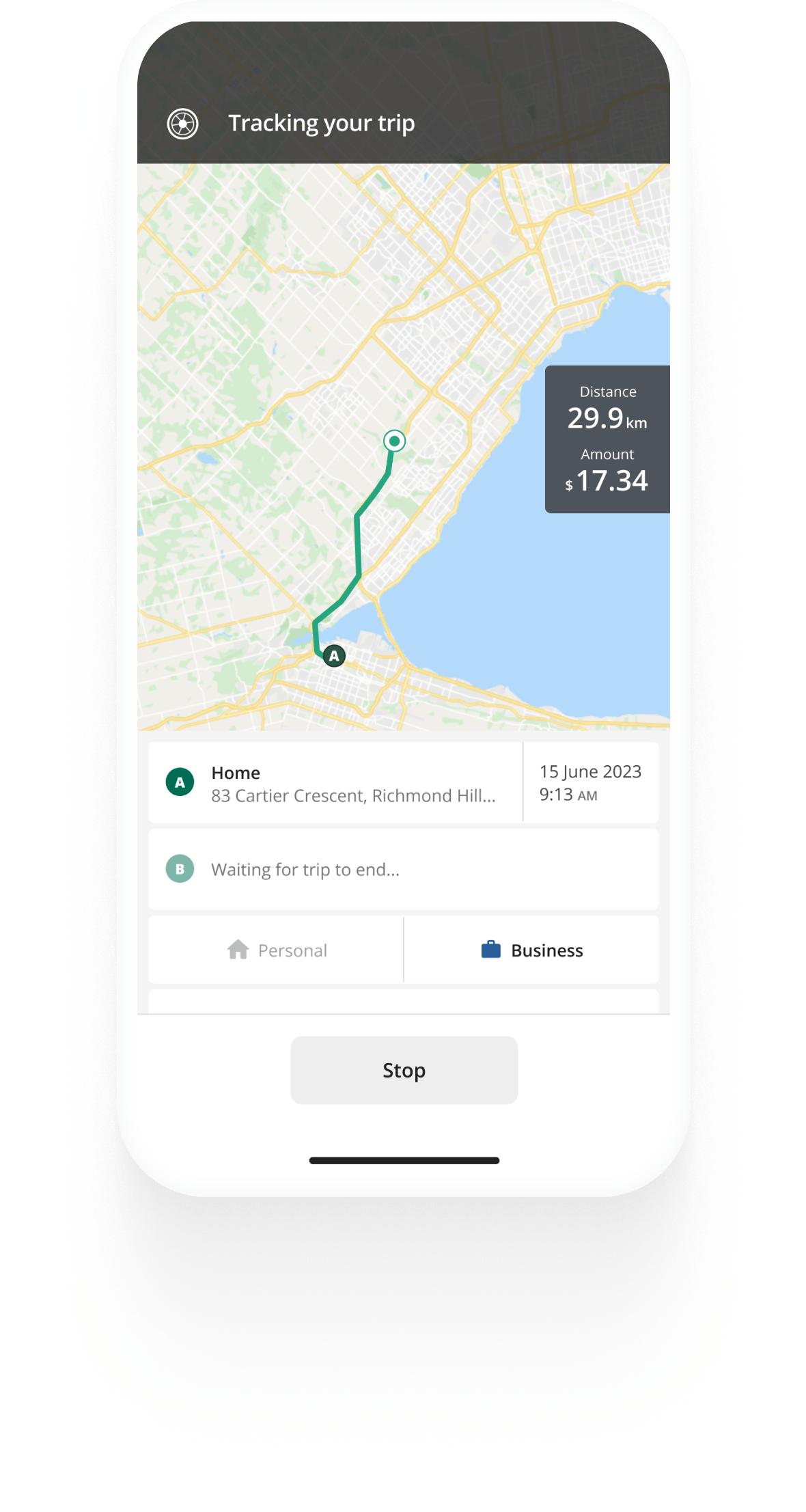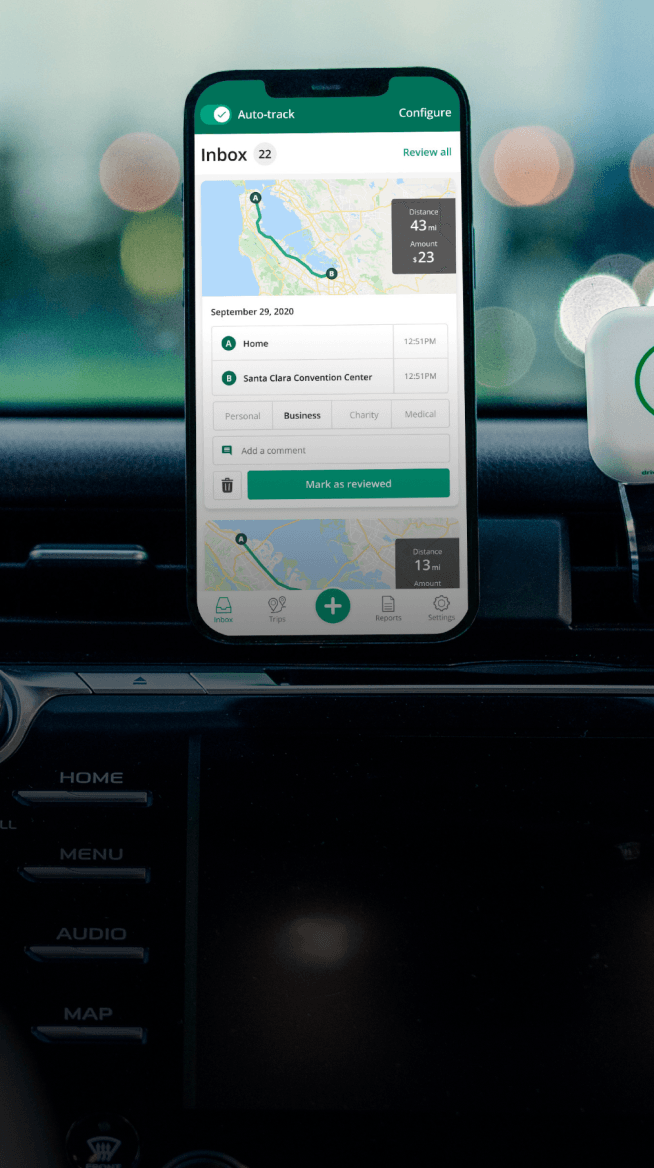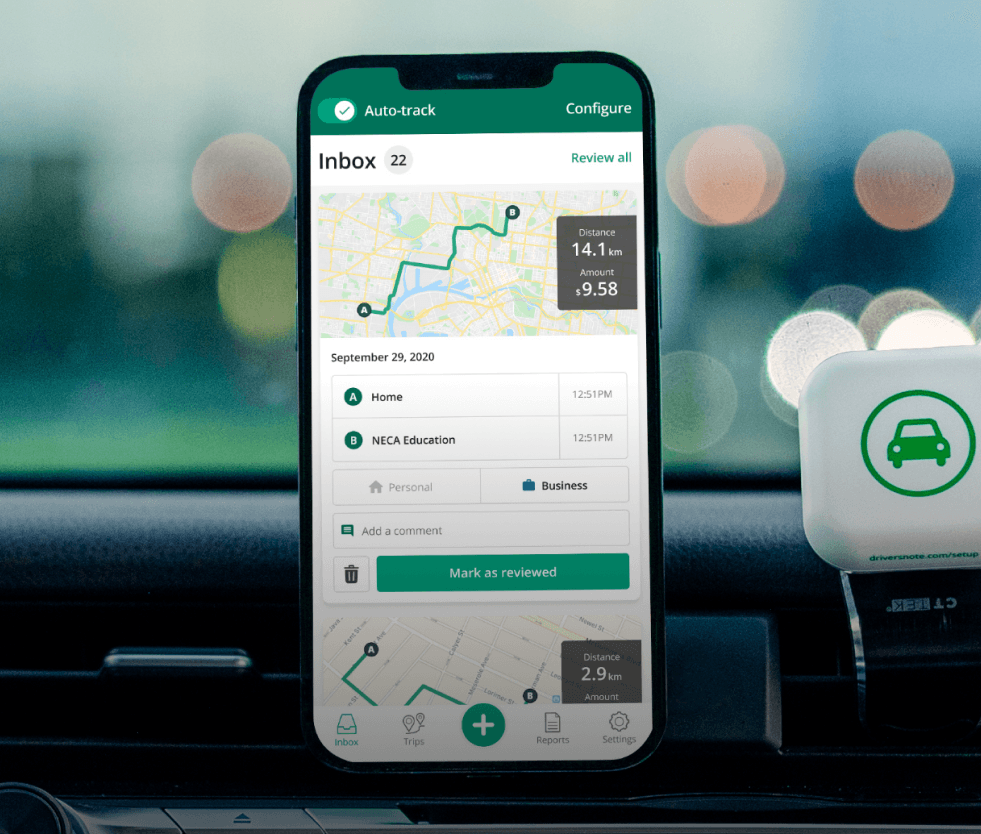Track mileage automatically
Get started
Mileage Reimbursement Calculator Canada
If you drive for work in Canada, you could be entitled to a substantial mileage reimbursement — this calculator helps you estimate how much and explains what you must log to claim it. Use the mileage calculator below to get an overview of how much you can receive as vehicle mileage reimbursement or deduction from the CRA for the year based on your work-related kilometres.
CRA mileage calculator
Enter your driving below to estimate the reimbursement or CRA deduction you are entitled to for your business kilometres.


Track business driving with ease
Trusted by millions of drivers
Automate your logbook Automate your logbook

Automatic mileage tracking and CRA-compliant reporting.
Get started for free Get started for freeCRA mileage rates
The CRA sets a standard mileage rate each year, which is used to calculate your mileage reimbursement. You can also choose to enter a custom rate in the calculator.
| Mileage rates | Up to 5,000 km | After 5,000 km | Northwest Territories, Yukon, Nunavut |
|---|---|---|---|
| 2025 | 72 cents | 66 cents | Additional 4c per km |
| 2024 | 70 cents | 64 cents | Additional 4c per km |
Mileage rates for each Canadian province
As shown in the table above, there is a small addition per kilometre in the three territories. Apart from that, there are no diversified mileage rates for the 10 provinces.
This means that you can use the CRA rates in the mileage calculator for BC, Ontario, Alberta, etc.
Example: Calculating your mileage reimbursement manually
Want to calculate your mileage reimbursement yourself? Let’s walk through a clear example:
Let’s say that by June 2025 your logbook shows a total of 6,000 km for business purposes.
All you need to do is multiply the 6,000 km by the mileage rate. However, you need to remember that the first 5000 km and the km after that are reimbursed at different mileage rates. Up to 5000 km, the CRA mileage rate for 2024 is 70¢; after 5,000 km, it is 64¢. Therefore, you would calculate your reimbursement like this:
- 5,000 (first 5000 km) x 0.70 = $3,500 (Your reimbursement for the first 5000 km)
- 1000 (Remaining km) x 0.64 = $640 (Your reimbursement for the km after the first 5000)
Now combine the two to get the total mileage reimbursement:
- 3500 + 640= $4,140 (total reimbursement)
If you have logged all the required information in your mileage logbook, there should be no reason for you not to get reimbursed. You can use the Driversnote mileage tracking app to ensure you never miss logging a trip and quickly generate compliant mileage reports.
Using the mileage calculator for reimbursement
In order to receive the calculated mileage reimbursement you deserve, you must be able to prove that you have driven kilometres for a business purpose.
To do so, you must keep a mileage logbook where you record your driven kilometres and clearly split private from business trips. Simply using the calculator to estimate your reimbursement is not enough for you to be paid out.
If you're in doubt about what details are required to keep track of for a CRA-compliant mileage logbook, read more about mileage log requirements in Canada.
Prepare your vehicle expense claim
You can determine your work-related car expense deductions by keeping track of your mileage in a logbook, whether it's an Excel sheet, a PDF, a physical notebook, or an app.
Also read: Free Mileage Log Template (Excel, Sheets & PDF)
Remember that you must log both business and personal trips when keeping a mileage logbook. That's because you need to be able to show the exact percentage of your vehicle business usage. The CRA requires you to keep your records for 6 years from when you turn in your tax return, in case they need you to substantiate your claims.
Worried you may forget to log all your trips? A mileage tracker is the easiest way to put tracking trips on autopilot. Driversnote offers automatic tracking for free and can help you never miss a trip again.

Tired of logging mileage by hand?
Effortless. CRA-compliant. Liberating.
Top posts
- Self-Employed Tax Deductions you Should Claim in Canada
- Free CRA Mileage Log Template
- Find the Best Mileage Tracking App for iPhone and Android
Related posts
CRA Mileage Rate 2024
Latest update: February 20, 2024 - 2 min read
The CRA announces 2024 rates for vehicle allowance: From January 1st, 2024, per kilometre rates will increase 2 cents over 2023.
Mileage Calculator Canada
Latest update: October 27, 2025 - 2 min read
Choose a CRA per-kilometre rate or enter your own. Simply enter how many km you drove to calculate your allowance or deduction.
Self-Employed Tax Deductions you Should Claim in Canada
Latest update: October 22, 2025 - 2 min read
See a list of common tax deductions for self-employed individuals in Canada and how to claim them at tax time to maximize your tax savings.

.svg)